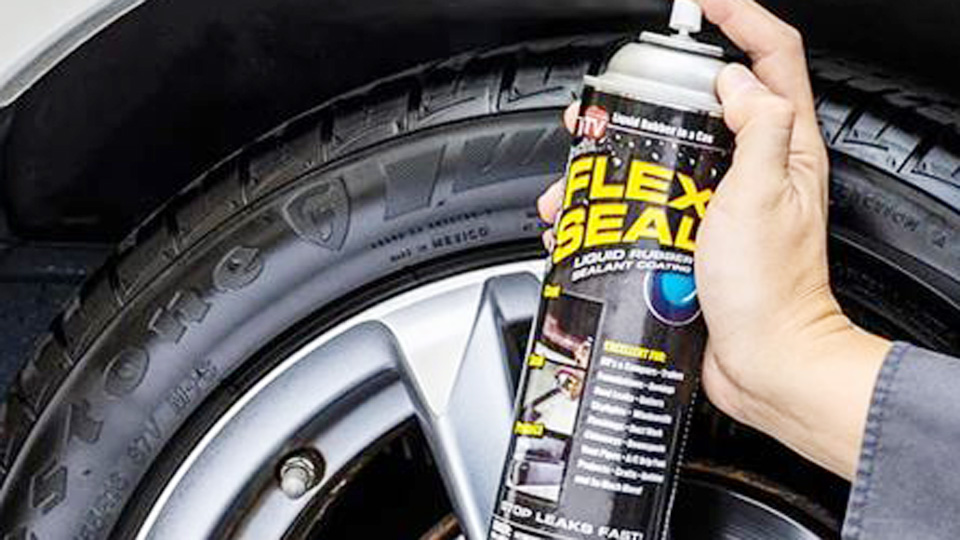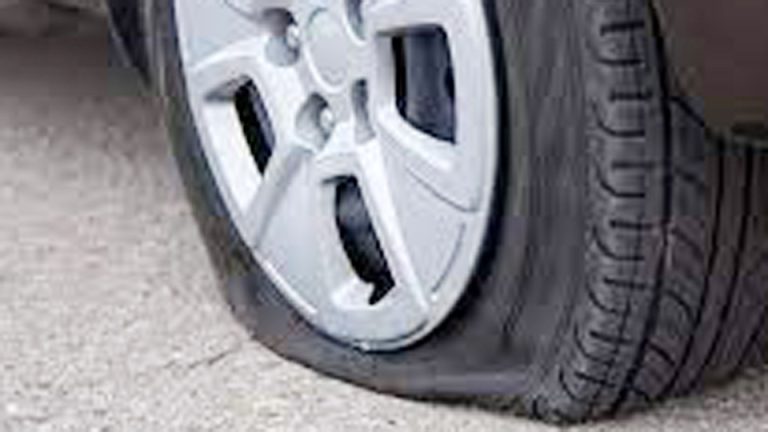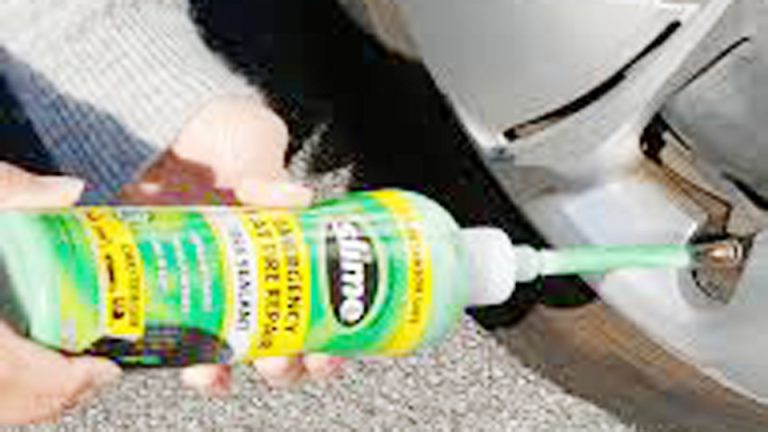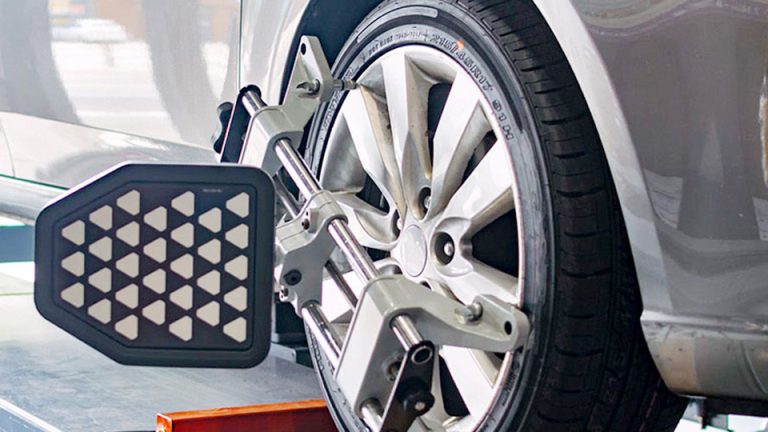A lot of drivers come to me with the same concern: a tire that keeps losing air and a can of sealant in hand, wondering, “Does Flex Seal work on car tires?” It’s an honest question, and I’ve dealt with it more times than I can count. Tires aren’t just another part of your car—they’re the only thing keeping you connected to the road. That means safety, performance, and even your wallet are on the line if you take a shortcut repair that doesn’t hold up.
I’ve seen plenty of people try quick fixes, only to end up stranded or buying a new tire anyway. In this article, I’ll break down what Flex Seal can and can’t do for tires, and share the lessons I’ve learned after years of patching, replacing, and testing them in my garage.

Image by flexsealproducts
What Is Flex Seal, and Can It Really Fix a Tire?
Flex Seal’s Purpose
Flex Seal is a rubberized liquid sealant that comes in a spray can or brush-on form. It’s designed to create a flexible, waterproof coating on surfaces like metal, wood, or plastic. You’ve probably seen the infomercials where it patches a boat or seals a leaking pipe. The idea is simple: spray or apply it, let it cure, and you’ve got a tough, rubber-like seal. But tires endure extreme conditions—high speeds, heat, pressure, and constant flexing—so the question is whether Flex Seal can handle that kind of abuse.
How Tires Work and Why They’re Different
Car tires are engineered marvels. They’re made of layered rubber compounds, reinforced with steel belts and fabric cords, designed to hold air pressure (typically 30–35 PSI for passenger cars) while supporting thousands of pounds. A puncture disrupts this balance, letting air escape and compromising the tire’s structure.
Fixing a tire isn’t just about plugging a hole; it’s about restoring the tire’s ability to handle stress without failing at 70 mph. In my shop, I’ve seen tires patched with everything from chewing gum to epoxy—spoiler alert: they didn’t last.
Does Flex Seal Hold Up on Tires?
Here’s the short version: Flex Seal is not designed for tire repair and isn’t a reliable long-term fix. I’ve tested it myself on an old tire with a small puncture (about 1/8 inch). I cleaned the area, applied the spray-on Flex Seal, and let it cure for 24 hours, as recommended. At first, it held air decently at low pressure (around 20 PSI), but when I inflated it to 35 PSI and drove it around the block, the seal started to crack and leak.
Tires flex constantly, and Flex Seal’s rubberized coating isn’t designed to stretch and compress thousands of times per mile. Plus, it’s not rated for the heat generated by high-speed driving or the UV exposure tires face daily.
When Might Flex Seal Work?
In a pinch, Flex Seal might slow a small leak enough to limp to a shop, but it’s not a substitute for a proper patch or plug. If you’re stuck on a backroad with a slow leak and no spare, a quick spray might buy you a few miles—but don’t bet your safety on it. I once had a customer who used Flex Seal on a sidewall puncture (a big no-no) and ended up with a blowout on the highway. Stick to emergency use only, and even then, drive slow and get it fixed ASAP.
Common Tire Problems and Signs You Need a Fix
Types of Tire Damage
Tires can fail in several ways: punctures, sidewall cuts, slow leaks, or worn tread. Punctures in the tread area (the part that contacts the road) are usually repairable if they’re small (less than 1/4 inch) and not too close to the sidewall. Sidewall damage, however, is almost always a death sentence for the tire—Flex Seal or not. Slow leaks often come from tiny punctures, corroded rims, or faulty valve stems. In my shop, I’ve seen everything from nails to screws to a rogue shard of glass causing flats.
Signs Your Tire Needs Attention
You’ll know something’s wrong if your tire pressure warning light comes on, you hear a hissing sound, or your car starts pulling to one side. A slow leak might only drop a few PSI overnight, but don’t ignore it—driving on an underinflated tire can overheat it and cause a blowout. Check your tire pressure monthly with a good gauge (I like the Milton S-921—it’s cheap and reliable). If you spot a puncture, mark it with chalk or a marker so you don’t lose track of it.
Why Timely Repair Matters
A flat tire isn’t just an inconvenience; it’s a safety hazard. Underinflated tires reduce traction, increase braking distances, and hurt fuel efficiency by up to 3%, according to the EPA. Plus, driving on a damaged tire can ruin the rim or suspension components, turning a $100 repair into a $1,000 nightmare. I’ve had customers limp into the shop on a flat, only to find the rim bent beyond repair—don’t be that guy.
When and Why to Replace or Repair a Tire
When to Repair
A tire can usually be repaired if the puncture is in the tread area, smaller than 1/4 inch, and not too close to the sidewall or shoulder. The Rubber Manufacturers Association (RMA) says repairs should always include a patch on the inner liner, not just a plug from the outside. Flex Seal doesn’t meet these standards—it’s not adhesive enough to bond with the tire’s inner liner, and it can’t handle the structural stress.
When to Replace
Replace the tire if the puncture is in the sidewall, the tread is worn below 2/32 of an inch (check with a penny—Lincoln’s head should be partially covered), or if there’s visible damage like cuts or bulges. I once had a customer insist on patching a sidewall tear with super glue and duct tape. Two days later, he was back with a shredded tire and a sheepish grin. Don’t gamble with sidewall damage—replace the tire.
Safety and Cost Considerations
A proper tire repair costs $20–$40 at most shops, while a new tire can run $100–$300 depending on the brand and size. Flex Seal might seem like a cheap fix (a can costs about $15), but it’s a false economy if it fails and leaves you stranded or causes a blowout. Safety always comes first—your tires are your car’s lifeline to the road.
OEM vs. Aftermarket Tire Repair Options
OEM Tire Repair Kits
Original Equipment Manufacturer (OEM) repair kits, like those from Michelin or Goodyear, are designed to meet strict safety standards. They typically include a rubber plug, adhesive, and a patch for the inner liner. These kits cost $30–$50 but are reliable for small punctures. The downside? They require tools like a reamer and plug inserter, and you’ll need some elbow grease to do it right.
Aftermarket Repair Options
Aftermarket kits, like those from Slime or Fix-A-Flat, are cheaper ($10–$20) and easier for DIYers. Slime’s tire repair kit, for example, includes plugs and a T-handle tool—simple but effective for small punctures. Flex Seal falls into the aftermarket category, but it’s not specifically designed for tires, so it’s less reliable than dedicated kits. I’ve used Slime kits in the shop for quick fixes, and they hold up better than Flex Seal under real-world driving conditions.
Flex Seal vs Traditional Repair Kits
Here’s a quick comparison based on my experience:
| Feature | Flex Seal | OEM Repair Kit | Aftermarket (e.g., Slime) |
|---|---|---|---|
| Cost | $15–$20 (can) | $30–$50 | $10–$20 |
| Ease of Use | Easy (spray or brush) | Moderate (requires tools) | Easy (plug and go) |
| Durability | Poor (cracks under pressure/flexing) | High (meets RMA standards) | Moderate (good for small punctures) |
| Safety | Not recommended for driving | Safe for long-term use | Safe for temporary use |
| Best For | Emergency, non-tire surfaces | Permanent tread repairs | Quick DIY fixes |
My Take
Stick with an OEM or aftermarket tire repair kit for punctures. Flex Seal is better suited for sealing a leaky toolbox or a cracked flowerpot. I’ve seen too many failed DIY repairs to trust it on something as critical as a tire.
Installation Tips and Maintenance Best Practices
How to Repair a Tire Properly
Here’s a step-by-step guide for patching a tire the right way, based on how we do it in the shop:
- Locate the Puncture: Inflate the tire slightly and spray soapy water to find bubbles. Mark the spot with chalk.
- Remove the Tire: Use a jack and lug wrench to take the wheel off. Safety first—use jack stands, not just the jack.
- Prep the Area: Deflate the tire and clean the puncture with a reamer tool (included in most kits). This roughs up the rubber for better adhesion.
- Apply the Plug: Insert a rubber plug using a T-handle tool. Trim excess rubber with scissors.
- Patch the Inner Liner: For a permanent fix, dismount the tire (you’ll need a tire machine) and apply a patch to the inner liner with rubber cement. This step is why shop repairs are more reliable.
- Reinflate and Test: Inflate to the recommended PSI (check your car’s door placard) and spray soapy water again to confirm the seal.
- Reinstall the Wheel: Torque the lug nuts to spec (usually 80–100 ft-lbs for most cars—check your manual).
Tools You’ll Need
- Tire repair kit (Slime or OEM)
- Tire pressure gauge (Milton S-921 is my go-to)
- Jack, jack stands, and lug wrench
- Reamer and plug inserter (included in most kits)
- Soapy water in a spray bottle
- Optional: tire machine for inner patches
Common Mistakes to Avoid
- Using Flex Seal as a Permanent Fix: It’s not durable enough for long-term use.
- Patching Sidewall Damage: Always replace the tire if the sidewall is cut.
- Overinflating: Too much pressure can stress the repair and cause a blowout.
- Skipping the Inner Patch: Plugs alone aren’t enough for a permanent fix, per RMA standards.
Maintenance Tips
Check your tire pressure monthly and inspect for nails or cuts. Rotate your tires every 6,000–8,000 miles to ensure even wear. If you use a repair kit, get the tire professionally inspected within a week—DIY fixes are often temporary. I once had a customer drive 1,000 miles on a Slime plug without issues, but that’s the exception, not the rule.
Identifying Genuine vs. Fake Tire Repair Products
Why It Matters
Counterfeit repair kits and sealants are a growing problem. Fake products often use low-quality materials that fail under pressure, putting you at risk. I’ve seen knockoff plugs disintegrate after a week, leaving the tire flat again.
How to Spot Fakes
- Check the Packaging: Genuine brands like Slime or Michelin have high-quality, detailed packaging with clear instructions. Fakes often have misspellings or blurry logos.
- Buy from Reputable Retailers: Stick to AutoZone, Advance Auto Parts, or Amazon’s verified sellers. That $5 kit from a sketchy online marketplace is probably too good to be true.
- Look for Certifications: OEM kits often mention RMA compliance. Flex Seal doesn’t, as it’s not a tire-specific product.
- Test the Product: Genuine plugs are sticky and flexible; fakes might feel brittle or smell like cheap plastic.
Pro Tip
If you’re buying Flex Seal, get it from a trusted retailer like Home Depot or Walmart. Counterfeit cans are common online, and they’re often just watered-down paint with no sealing power.
Real-World Anecdotes from the Garage
One of my favorite shop stories involves a guy who rolled in with a tire “repaired” with Flex Seal and electrical tape. He’d seen the infomercial and figured it was worth a shot. The tire held air for about 10 miles before it started leaking again. We had a good laugh, but it was a reminder of how desperate people get when they’re stuck with a flat. I showed him how to use a Slime kit properly, and he was back on the road for under $20.
Another time, a customer brought in a tire with a nail right on the tread-shoulder border. He wanted to patch it himself with a can of Fix-A-Flat, but I warned him that anything near the sidewall needs a new tire. He didn’t listen, patched it anyway, and was back a week later with a shredded tire. Lesson learned: know when to repair and when to replace.
Conclusion: Making Smarter Tire Repair Decisions
Tires are your car’s connection to the road, and fixing them right is non-negotiable. Flex Seal might seem like a quick fix, but it’s not built for the demands of a car tire. For small punctures, a proper tire repair kit—whether OEM or aftermarket like Slime—is your best bet. They’re affordable, reliable, and meet safety standards. If the damage is too big or on the sidewall, bite the bullet and replace the tire.
Always keep a tire repair kit and a portable air compressor in your trunk. They’re lifesavers when you’re miles from a shop, and they’ll save you from relying on sketchy fixes like Flex Seal.
FAQ: Common Tire Repair Questions
Can You Use Flex Seal on a Car Tire Sidewall?
No, Flex Seal isn’t strong enough for sidewall repairs. Sidewalls flex too much, and any damage there usually means the tire needs replacing. Use a proper repair kit for tread punctures only, and get sidewall issues checked by a pro.
How Long Does a Tire Repair Last?
A properly patched tire (plug + inner patch) can last the life of the tire if the puncture is small and in the tread area. DIY plug-only repairs, like Slime, are temporary—get them inspected within a week.
Is Fix-A-Flat Better Than Flex Seal for Tires?
Yes, Fix-A-Flat is designed for tires and injects a sealant plus air to get you to a shop. It’s not perfect (it can mess up TPMS sensors), but it’s better than Flex Seal, which isn’t tire-specific.
Can I Drive Long Distances After a Tire Repair?
If the repair follows RMA standards (plug + inner patch), you can drive normally, but check the tire pressure regularly. Temporary fixes like Flex Seal or plugs alone aren’t safe for long drives—get to a shop ASAP.
How Do I Know If My Tire Repair Kit Is Genuine?
Buy from reputable retailers like AutoZone or Advance Auto Parts, and check for clear branding, instructions, and RMA compliance. Avoid cheap kits from unknown online sellers—they’re often counterfeit and unreliable.



